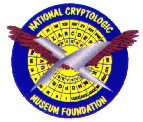
|
|
Tulane Engineering Forum |
||||||||||||||||||||||||||||||
|
Bill P. Buckles
Bill P. Buckles received the Ph.D. degree in Operation Research from the University of Alabama in Huntsville
in 1981. Prior to joining the Tulane University, where he is Professor
of Computer Science, he was on the faculty at the University of Texas in Arlington. He has been an
associate editor of the IEEE Trans. on Parallel and Distributed Systems, Chair of the IEEE Computer
Society Technical Committee on Distributed Processing, and recently General Chair of the IEEE Intern.
Conference on Distributed Computing Systems. Twice he has been honored with technical achievement
awards from NASA. Among approximately 120 papers in national or international media, he has published
27 journal articles. His interests include data mining, data warehousing, evolutionary computation,
and image processing.
Presentation Topic:
Image Databases
By Bill P. Buckles
Summary
The confluence of increased computer storage capacity and rapid replacement of analog imaging
devices with digital ones have lead to a large number of enterprises owning vary large sets of
images. NASA's Earth Science Enterprise now collects as many digital images in 90 days as it did
during its first 20 years of existence. Hospitals still rely heavily on film but a shift to digital
instrumentation is evident. The growth of the internet makes these image sets yet more valuable.
The question is: How can images be organized so that they are conveniently accessed by doctors,
scientists, farmers, and others? An image cannot be expressed as a concise vector of well-understood
symbolic components such as the records in databases of the past. What representation will allow
an oceanographer to find all cloud-free images containing a hydrocarbon slick? How can a radiologist
fetch the most appropriate images for review prior to consultation with a patient? Both context (when,
where, and how was the image obtained) and content information are necessary. Content description is
the main issue. One can attach symbolic descriptors (e.g., ``convective storm,'' ``Clark Gable,'' ``
cancer lesion'') or generate subsymbolic descriptors (e.g., statistical measures of color or texture).
Extensibility, performance, and ease of use are factors affecting which approach to apply. Once solved,
the trove of images now available will provide a treasure trove of economic and scientific benefits.
Imagine doctors being able to find examples of patients having similar lesions from all over the nation.
Imagine land developers being able to find projects similar to their own and from them study the changes
in land use and infrastructure development. Imagine an ecologist being able to find all examples of
progressive deforestation dating from, say, 1970. Imagine data mining ...
|
|||||||||||||||||||||||||||||||






